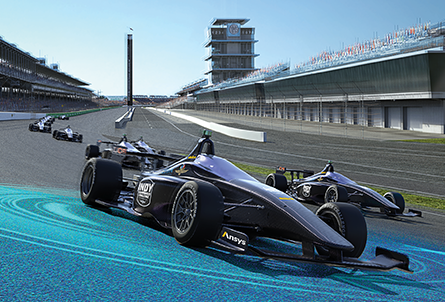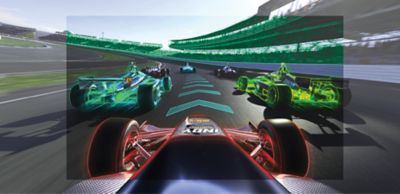-
-
Accédez au logiciel étudiant gratuit
Ansys donne les moyens à la prochaine génération d'ingénieurs
Les étudiants ont accès gratuitement à un logiciel de simulation de classe mondiale.
-
Connectez-vous avec Ansys maintenant !
Concevez votre avenir
Connectez-vous à Ansys pour découvrir comment la simulation peut alimenter votre prochaine percée.
Pays et régions
Espace client
Support
Communautés partenaires
Contacter le service commercial
Pour les États-Unis et le Canada
S'inscrire
Essais gratuits
Produits & Services
Apprendre
À propos d'Ansys
Back
Produits & Services
Back
Apprendre
Ansys donne les moyens à la prochaine génération d'ingénieurs
Les étudiants ont accès gratuitement à un logiciel de simulation de classe mondiale.
Back
À propos d'Ansys
Concevez votre avenir
Connectez-vous à Ansys pour découvrir comment la simulation peut alimenter votre prochaine percée.
Espace client
Support
Communautés partenaires
Contacter le service commercial
Pour les États-Unis et le Canada
S'inscrire
Essais gratuits
ANSYS ADVANTAGE MAGAZINE
DATE: 2020
Autonomous Cars to Race at Indianapolis Motor Speedway
By Ansys Advantage Staff

Ansys is the exclusive simulation sponsor of a two-year, $1 million prize competition that will culminate in a head-to-head, high-speed autonomous vehicle (AV) race on Oct. 23, 2021, around the Indianapolis Motor Speedway’s famed 2.5-mile oval, which also plays host annually to the Indianapolis 500 presented by Gainbridge, the largest single-day sporting event in the world.
The Indy Autonomous Challenge, organized by the Indianapolis Motor Speedway (IMS) and Energy Systems Network (ESN), is a competition among universities to create software that enables self-driving Dallara race cars to compete in a head-to-head race on the IMS track.
“There’s a fundamental connection between innovations on the racetrack and real-world improvements on the highway,” said IMS President J. Douglas Boles. “With the launch of the Indy Autonomous Challenge, IMS continues to embrace its historic role as a catalyst for the next generation of vehicle technologies in motorsports competition and wider consumer platforms. And while drivers will always be at the heart of racing at IMS, we’re excited to be part of this groundbreaking and exciting initiative.”
The purpose of the race is to promote development, commercialization and consumer knowledge of fully autonomous vehicles and advanced driver assistance systems (ADAS). The hope is that the competition will create a pool of young engineers ready to develop ADAS and autonomous vehicles and that motorsports fans will learn how these systems can make everyday roads safer.
Simulation Plays a Key Role in the Race
As the exclusive simulation sponsor for the Indy Autonomous Challenge, Ansys will be making significant contributions, not only in software but in team training and by conducting a simulation race as part of the challenge. The simulation race will feature models of the different race teams’ autonomous cars. Each team’s software will drive the cars as they compete in the simulation race before the third round of the competition.
“Ansys realizes that the world is undergoing a great mobility revolution,” says Sandeep Sovani, Ph.D., global director – automotive industry, Ansys. “It’s a great transformation that is going to bring enormous new value and well-being to society at large. For instance, AVs will reduce the number of automobile accident deaths, plus it will free up our driving time and liberate us to use that time more productively.”
Sovani says saving an hour of driving time could result in a 12.5% growth in the gross domestic product of the U.S.A. alone.
Last year, Ansys announced its Ansys Autonomy tool chain for AV simulation. Two important pieces of that toolchain are being made available to students who are participating in the Indy Autonomous Challenge: Ansys VRXPERIENCE Driving Simulator powered by SCANeR and Ansys SCADE Suite software development toolkit.
“Ansys has launched a major initiative on AV simulation because simulation will play a crucial role in the development of AV,” Sovani says. “Autonomous driving won’t happen without simulation to test the millions of potential driving scenarios.”

Five Rounds to Win
The Challenge consists of five rounds. Teams submit a short white paper during the first round, and in the second round, teams must demonstrate vehicular automation by sharing a short video of an existing vehicle or by participating in Purdue University’s self-driving go-kart competition at IMS.
The third round of the challenge will be a simulation race, which will be held in February 2021 after a series of Hackathons hosted by ESN and Ansys. The simulation race will be a close replica of the actual race. It will be conducted inside Ansys VRXPERIENCE Driving Simulator powered by SCANeR. Inside of that giant simulation will be a replica of the Indy Motor Speedway with each team’s race car piloted by the autonomous driving software the students created. Each team will have free access to:
- Ansys VRXPERIENCE Driving Simulator powered by SCANeR
- Ansys SCADE Suite software development toolkit
- Simulation training
- 3D models of IMS and race vehicles
These tools offer the teams the technology they need to develop their autonomous systems. Each race car will have models of the entire sensor suites and connected vehicle dynamics in order to simulate the Indy Lights race car.
The race will start when the simulation starts running, then all the teams are hands off while they watch their cars simultaneously race around the track. The winners of the virtual race will win the Ansys Indy Autonomous Challenge Simulation Championship cash prizes totaling $150,000.
In the fourth round, teams will test their autonomous car software on the IMS racetrack. These tests will ensure that the car meets safety and competition standards. Each team will use a standard Dallara IL-15 chassis, which is currently used in the Indy Lights series, and powertrain to ensure the focus of the testing is on the software. Through Clemson University’s long-running vehicle prototype program Deep Orange, Clemson graduate automotive engineering students will collaborate with ESN and Dallara to engineer an autonomous-capable version of Dallara’s 210 mph IL-15 chassis that can accommodate the competing university teams’ driverless algorithms. Participating teams will be directly involved in the converted vehicle’s design and specifications through monthly virtual design reviews and other feedback channels throughout the competition.
Finally, teams will race head-to-head on the Indianapolis Motor Speedway for $1 million, $250,000 and $50,000 cash prizes in the fifth round. Win or lose, the teams will foster the next generation of engineers who are ready to lead the world into a more autonomous reality.
“What we’re asking universities to do is hard,” says Matt Peak, managing director at Energy Systems Network. “Our hope is that by bringing together and offering up to participating teams the world’s premier automotive proving ground, performance chassis manufacturer, engineering research center and simulation platform, as well as nearly $1.5 million in total cash awards, universities will see the Challenge as not just throwing down the gauntlet but also extending the helping hand to accelerate innovation and the arrival of new technologies.”
Commençons
Si vous êtes confronté à des défis d'ingénierie, notre équipe est là pour vous aider. Forts de notre expérience et de notre engagement en faveur de l'innovation, nous vous invitons à nous contacter. Collaborons pour transformer vos obstacles techniques en opportunités de croissance et de réussite. Contactez-nous dès aujourd'hui pour entamer la conversation.